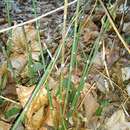fi
nimet breadcrumb-navigoinnissa


Additional microscopic characters ex Gruber (2006: 23-25), obtained features were taken from dead (exsiccated) and living samples, be aware that living material does deviate in some respects and shows regularly bigger elements, most likely due to loss of turgor in vacuoles in dead structures (look for articles of H.O. Baral, not cited at time).
Excipulum composed of 2 different layers, the outer one hyaline, comparatively thick and tough, as typical for the genus built of hyphae with readily swelling, thus quite thick walls, being obviousely of functional value (dry / wet condition), not excelling the hymenium and forming some collar. The remaining non-hymenial tissues showed less diagnostic characters during my investigations and are therefore here omitted.
Paraphyses abundand, 1.5-2 µ across, remotly septate, ramified, anastomosing in lower part, filled with many yellow-orange small guttulae, upper ends at level of ascus-tips or slightly above (fully mature, living asci will excel them), ending cell clavate, thickened to (3)4-6(7.5) vital, 3-4(5) µ dead.
Asci slender clavate with round, blunt tips, 8 spores biserial wthin, lower ones when dead uniserial, apical structure anamyloid = J-, as well when treated with KOH.
Measuring vital, Styrian samples: [120]150-200[240] : [12]14-20[23] µ;
letal, holotyp: (120)130-150(165) : [12]15-17(18) µ, [probably immature + exceeding],
(less frequent). Compare Künkele & al. (2005) for measurings.
Ascospores hyaline, slender ellipsoidic to slightly fusiform, aseptate, nearby apolar, straight to slightly bend, vital with multiple noncoloured guttules, being confluent when dead.
Variation of spore-dimensions: Styria, vital – [20]22-32[38] : 6-8(9) µ;
ex herbaria, dead – [17]20-29[35] µ; compare Künkele & al (2005).
Average spore-dimensions: Styria, vital – 27.4 : 7.2 µ = Q.: 3.8;
ex herb., dead – 24.2 : 6.3 µ = Q.: 3.8,
[statistical equivalence of specimens ex herb., dead: 23.1 : 6.2 µ = Q.: 3.7]
Variation of average dimensions, ex herb., dead: 20.5 – 27.2 : 5.6 – 6.8 µ
Variation of quotient of length : width, ex herb., dead: Q.: 3.4 – 4.1
You may cite given information, but please do contact me before, and don't forget to cite source, anyone may ask me for further information.
This is a short description of species, lacking some informations, e.g. microscopic features, which are provided in the following diagnostic description,see there, please ask me in case of questions.
Stamnaria americana does belong to Ascomycetes, being classified in Helotiales or Leotiales. Its bright yellow-orange to orange coloured (hydrated) discus shaped generative Fruitbodies, termed apothecia do grow exclusively on living aerial shoots of Equisetum hyemale during cold season (Okt./Nov. - Feb./Mar.), its distribution depends on the host.
Ascocarps for usual do appear in groups on blackened areas of host and will remove pieces of rigidhosts epiderm when emerging, one may see this on dead host when the fungus has vanished in summer. Those conspicuously coloured apothecia may be sessile to short stalked and may grow to slightly more than 1mm across. I will not tell all about microscopic features herein, but there is one important feature for secure identification: asci (sporangia) are J-, there is no! blueing at apices when adding jodine. This character separates S. americana from close related S. laetissima (Cesati) ined.!, which may inhabit E. hyemale as well, but got J+ structures at ascus-tips.
The vegetative spores, conidia, as well as building structures are termed Titaeospora equiseti (as in other S. spp.), and may regularly be found for usual during warmer season on blackened spots where ascocarps will follow later. These conidia may sometimes be present together with ascocarps, and seem not to be spread by wind since being glued and connected by secondary anastomoses.
The currently known distribution of S. americana is centered in Middle Europe and in eastern USA,still i guess it to be overlooked resp. misident. in other regions where the host is present..
Europe: Austria; Belgium? - location to an exsiccatum is missing; France; Germany; Switzerland
North America, USA: Indiana; Massachusetts; Michigan, New Jersey, New York, Ohio, Virginia, Wisconsin, California? - solely anamorph on E. hyemale, Colorado? - solely anamorph on E. hyemale.
Those specimen with Titaeospora equiseti from California and Colorado might represent the asexual stage of either S. americana or S. laetissima (Cesati) subsp. laetissima ined.! Gruber (2006: 39-49, there ranked as variety, what is not correct).
This clearly different S. laetissima is much similar in gross appearance and was proved by ascocarps on Equisetum laevigatum from Washington and Oregon. Some specimen from western States including California and Colorado do bear the anamorph on this host, and most likely do refer to S. laetissima, since S. americana has proven to inhabit exclusively E. hyemale. European S. laetissima was found inhabiting E. hyemale, which might probably happen in American populations as well.
You may cite the given information, but please do contact me before, and don't forget to cite the source, anyone may ask me for further information.
Stamnaria americana je grzib[1], co go ôpisoł Massee & Morgan 1902. Stamnaria americana nŏleży do zorty Stamnaria i familije Helotiaceae.[2][3] Żŏdne podgatōnki niy sōm wymianowane we Catalogue of Life.[2]
Stamnaria americana je grzib, co go ôpisoł Massee & Morgan 1902. Stamnaria americana nŏleży do zorty Stamnaria i familije Helotiaceae. Żŏdne podgatōnki niy sōm wymianowane we Catalogue of Life.